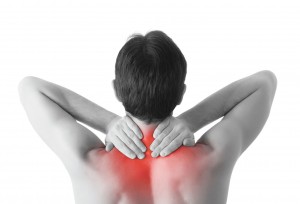By Dan Goldstein, PT, O/SCS, ATC, GFS
 Chronic shoulder pain, which can be caused by a number of reasons, is a common problem that prompts more than four million Americans to seek medical treatment each year.
Chronic shoulder pain, which can be caused by a number of reasons, is a common problem that prompts more than four million Americans to seek medical treatment each year.
When all moving parts of the shoulder are considered, it is no surprise why so many people experience shoulder pain. The shoulder area is comprised of a ball and socket joint, as well as the scapula or shoulder blade, the clavicle or collar bone, and also the humerus or upper arm bone. The shoulder is the most flexible joint in the body, with a wide range of motion, which inevitably causes it to become susceptible to injuries. Increasing the chances for something to go wrong is the fact that the ball of the upper arm is larger than the socket of the shoulder. In addition, the muscles, tendons and ligaments in this area are often subject to injury and overuse.
Oftentimes, when patients present to physical therapy offices with complaints of shoulder pain treatment is not always straight forward. Commonly shoulder pain diagnoses include a strain of the muscle tendons (tendonitis), a rubbing of the bones causing bursitis or arthritis, muscle/tendon tears of the rotator cuff, nerve irritation from the neck, or postural changes which interfere with normal movement. Because of the numerous moving parts of the shoulder area, it is not uncommon for patients to experience prolonged shoulder pain and limited functional mobility despite various medical treatments.
The normal movement of the shoulder actually requires coordinated movement of four joints and multiple muscles. Without the proper movement patterns the shoulder bones jam, nerves can be pinched and other areas, like the neck and elbow have to endure more strain. Most people recognize the shoulder as the upper arm bone (humerus) articulating with the shoulder blade (scapula). As the arm moves up to reach, for example, the scapula has to rotate which provides stability for you to pick something up. The scapula also attaches to the collar bone going across the front of your upper chest. Additionally, the scapula moves by rotating over the ribs—a rounded back posture results in the ribs pushing up under the shoulder blade which limits motion. All of this just to lift your arm and reach up.
Muscles and nerves from the neck attach to the scapula and clavicle. Muscles, such as the pectoralis, run from the ribs in the front of the chest to the humerus. There is extensive muscular control from the mid-back and associated ribs to the scapula. And, there are four muscles from the shoulder blade to the humerus who’s tendons wrap around forming the “rotator cuff.” These muscles are responsible for fine control of appropriate joint movement without the bones jamming. It is no surprise that overuse or improper use of these muscles can result in shoulder pain.
As an aside, the “shoulder turn” in golf is achieved by both shoulder blades moving over the ribs. Addressing the ball with excessive upper back bending can limit your turn requiring a compensated, less reproducible swing.
Do you have chronic shoulder pain or limited mobility despite receiving medical attention? Living with any type of chronic pain can be rather trying, but with proper physical therapy, it can be possible to manage. A trained physical therapist can teach you exercises to increase and maintain strength in all of the moving parts of the shoulder. These exercises can help you avoid future shoulder problems.
If you suffer from chronic shoulder pain consider that proper rehabilitation requires carefully consideration of the extensive anatomy and solving the puzzle of how each part coordinates to achieve successful pain-free movement. One of the initial exercises I teach to patients who present with shoulder pain is the “open the book.” When executed properly, this simple exercise uses gentle stretching to begin eliminating pain and increasing range of shoulder blade movement. If you would like a copy of this exercise send a note with your address to 1896 Palm Beach Lakes Blvd., West Palm Beach, FL 33409 or e-mail to spbalance@aol.com.
……………………………..
Dan Goldstein, MS, PT, OCS, SCS, ATC has been providing care for clients in West Palm Beach since 1984. If I can help answer any questions about the uses and benefits of physical therapy please call me at 561-371-6021 or e-mail me at spbalance@aol.com.
Check Also
RejuvaNATION MedSpa: Elevating Men’s Health to New Heights
Embark on a Journey to Revitalize Your Vitality Rediscover the joy of a spontaneous sex …
 South Florida Health and Wellness Magazine Health and Wellness Articles
South Florida Health and Wellness Magazine Health and Wellness Articles




